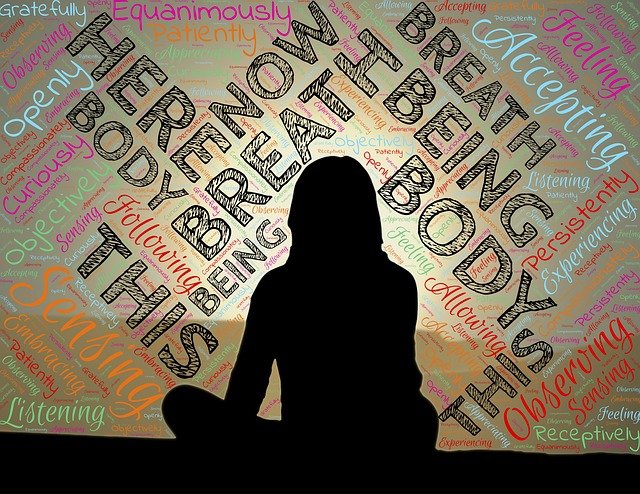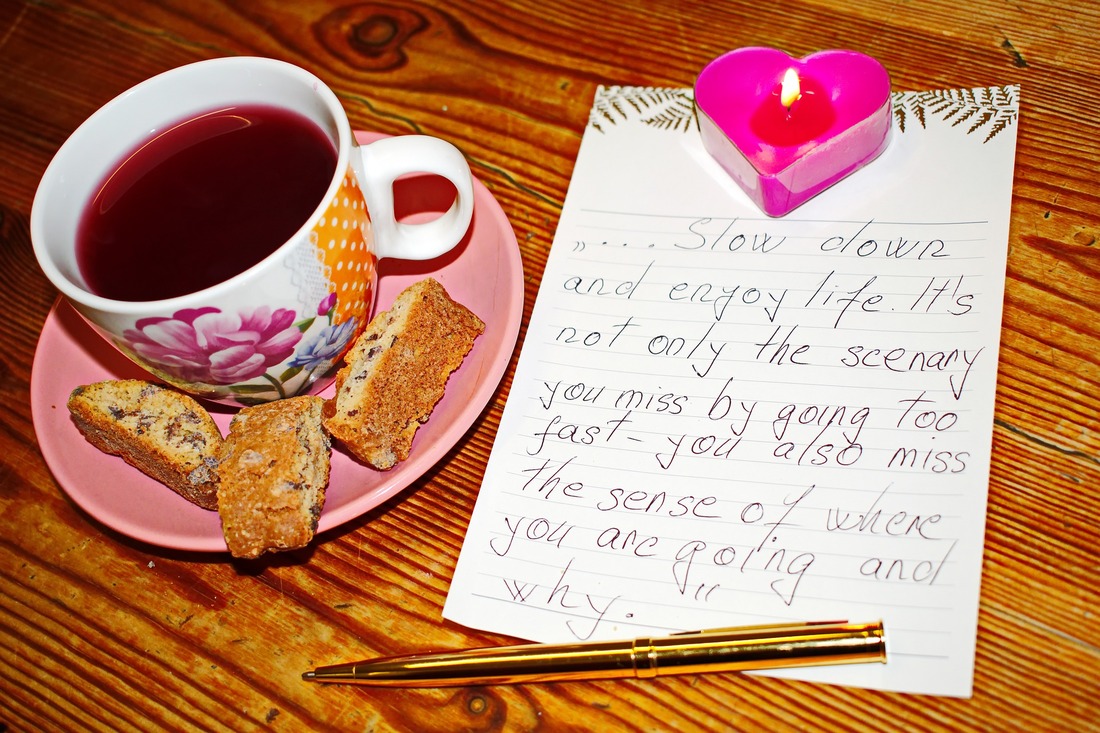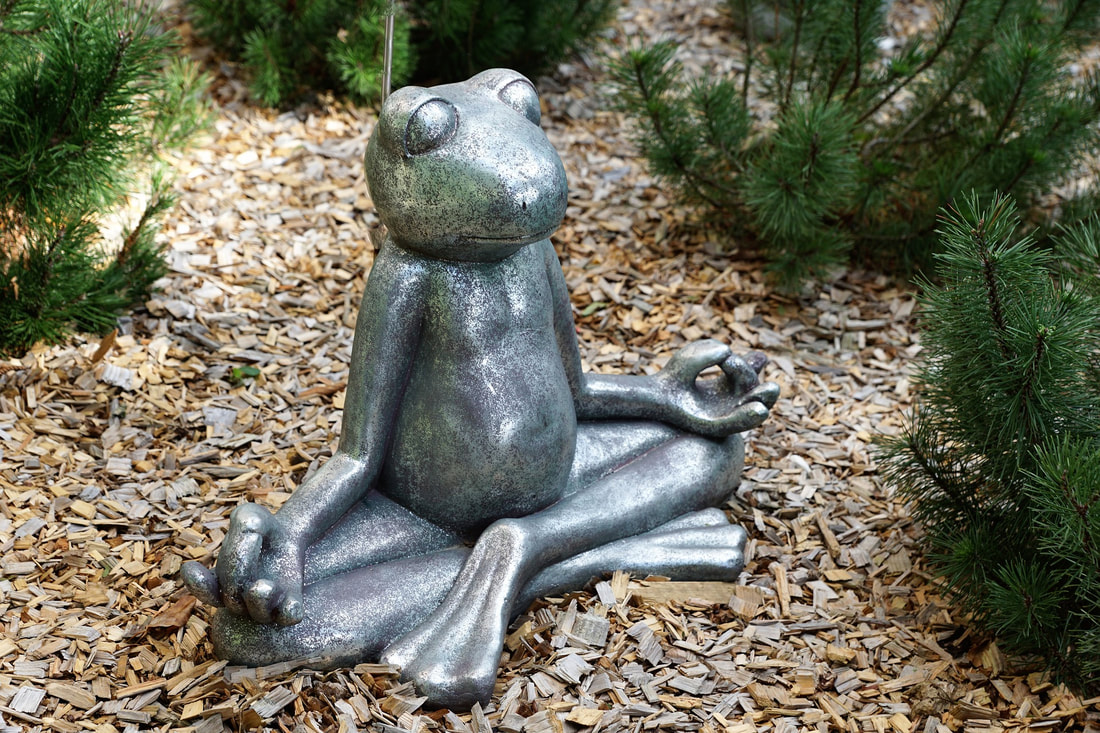|
When you’re new to a meditation practice, even the simplest of things can deter you.
Here are 7 answers to questions or concerns that may have crossed your mind. 1. What happens if I must sneeze or itch? Sneezing and itching are natural. Just do it and then bring yourself back to the meditation by focusing on your breathing. If you are constantly wanting to itch or fidget, this might be a sign that you need to use a bit of focus over the distraction. Try and breathe into the area that is wanting to move. Try not to become frustrated with yourself. Just gently breathe. If it continues, try again at another time. 2. I think I might be someone who CAN’T meditate. If you’ve even considered this thought, then you have already created a foundation to meditate. Just by breathing, you have the basis to meditate, since breathing is the foundation of meditation. But the key is to use the breath as your ANCHOR to keep you in the meditation state. It is a constant source to assist you. 3. What if I get distracted easily when I try to meditate? First identify if you are in an area that has too many distracting items, sounds or activity. If so, remove yourself from this environment, then actively create the kind of space you need for a little quiet time. It may mean you tell the people close to you that you’ll be ‘out of action’ for a little while. As mentioned in the point above, use the breath as your anchor when any distraction tries to take your focus away. 4. Should I attend a group meditation class or practise by myself? Both are great! A group meditation class is a great way to stay focused. Instead of you having to be diligent with creating a meditation, you just follow the guidance of the teacher. There is a bonus to a group meditation class – the energy is amazing! But, if you would like to follow your own timing and type of meditation, then going it alone will work for you. Whatever you feel comfortable with is the best. 5. Should my eyes be closed or open? There are no rules to this. Both can work well. However, if you are finding it a challenge to stay focused, then closing your eyes might work well. If you do want to keep them open, then finding a point directly in front of you towards the ground is a good starting point. Soften your eyes, then breathe slowly keeping this soft gaze on the one spot. 6. What if there are things in my life worrying me and I’m concerned that I will be distracted?Worrying and thinking are natural. But if you want to meditate without these distractions, then writing them down before meditation can help. Once you have written them down, you know that you won’t forget them. They will still be there to attend to at the end of the meditation. You will probably be in a better frame of mind to deal with them after meditating. 7. I can’t relax or sit still if I try to meditate.Sometimes body temperatures fluctuate, and some people may become hot or cold during meditation. Wearing layers or having a heat pack or blanket nearby can help to relax you. You could try putting on a timer for 5 minutes. In your mind you know that isn’t long, so you are likely relax knowing that it is for a short time. #meditation #selfcare # breath #calm #mindful #relaxation #meditationplus1111
0 Comments
5/20/2022 0 Comments Moments in time...World Meditation Day 20th May 2022
The days, weeks and months fly by and sometimes just thinking of the morning’s events seems like a blur. This is the perfect motivation to start being conscious of your time. It is far too common to let life pass by without being conscious and present. This is where investing in bite-sized snacks of meditation produce the golden nuggets! Not everyone can find the time to meditate for long periods of time. And there is no need to do so. I have long been the supporter of taking time out for meditation in shorter time frames. The fact that most people feel that their days are just flying by is a red flag to how busy our lifestyles are getting. Which is precisely why slowing down our mind and body for periods of time can result in more productivity and better health. Instead of saying, ‘where did that day/week/month go’ our best attack for being robbed of our precious time is remember moments in time. To remember moments in time, you need to be fully present in them. So how do we do that? Whatever you are doing, make your focus on that – sounds ridiculously simple, but somehow a lot of us get it wrong. Here’s an example: drinking a lovely hot cup of your favourite drink and all you do is think of something in the past or future. Then before you know it, the drink is finished, and you didn’t spend one moment savouring it. This is where being present, and conscious comes into it. Make meditation (whichever form of meditation you prefer) a part of your life. Do you like being outside in nature? Perfect! Plant those toes on the grass and feel the soft dewy blades of grass between them. Feel into the soles of your feet as they step along the grass. This is a meditation! But wait, you do need to put your phone away while you do this. You see, being present means focusing on you and your body at that very moment. Don’t worry, as little as a five minutes walk on the grass where you are just being you is so beneficial. If you can’t get outside, that’s okay. There is always something you can do wherever you are. Find a corner of your home that you feel comfortable in. Sit or lie down, take note of how your body feels. Do a mental body scan starting with your feet. Wriggling those toes and feeling your feet sounds simple, but that is the start. If you travel up your body, letting all thoughts focus on your body parts, you will find that your body reacts and lets go as you progress. This is such a simple method to do a meditation in such a short time. Letting yourself immerse in each body part with loving kindness and compassion is such a beautiful thing to do for yourself. There is no pressure to change anything – JUST BE. What mindful activity will you be present in? #meditation #worldmeditationday #bekindtoyourself #selfcare #mentalhealth #health #mindfulness #consciousness #bepresent #naturemeditation #walkinnature #bodyawarenessmeditation #mindfulnessmeditation #relaxation #maketimeforyourself #breath #mindfulbreathing Photo courtesy of Photo by Noah Silliman on Unsplash
3/23/2021 1 Comment One minute...that's allI wanted to write a blog about how to encourage people to try meditation. I ended up Googling all sorts of subjects, but this one point got me thinking.
In one hit that Google produced, it said that generally, people will have around 6000 thoughts a day. In the next hit below on the Google search list it said that we have around 70,000 thoughts per day. There is a big difference there and my thoughts were, ‘well, how can anyone judge what the general number of thoughts are anyway!’ So, I continued in my original search to learn about how to encourage someone to try meditation. If the general person, who could be a sceptic or not, have so many thoughts, then surely there must be a middle ground to reaching people in either direction. Of course, this came down to the breath. As I type this, I can hear a collective ‘sigh’ at the mere mention of the word ‘breath’. It nudges me to remember my role as a teacher of meditation, to persist in using this term, even if the recipients are less than receptive. Which brings me back to scepticism. Why are people sceptic about meditation when it has been proven to be so good for our health? Is it because they think that to meditate, you need to empty your mind of all thoughts? Is it because they think its for hippies who sit on a mountain wearing tie-dyed clothes chanting Om? Is it because they think they don’t have time for that sort of ‘new age mumbo jumbo?’ The solution to my query is to encourage people to - s t o p, b r e a t h e and be m i n d f u l. Write those thoughts down and attend to them later. Give yourself 1 minute to consciously breathe (yes, just 1 minute!) You deserve it. Chances are, you’ll be more receptive to the most important thoughts when you calm your mind by consciously breathing and being in the moment. B R E A T H E…1, 2, 3… What are your thoughts? 😉 People often ask what the best preparation when attending a meditation class is (in-person, online or at home).
The most important thing is to make sure you are comfortable. ‘Comfortable’ might mean different things to different people. It might mean:
What do you need to make yourself comfortable for meditation? 1/18/2021 0 Comments DeclutteringI’m finding that this January, I am doing a lot more de-cluttering than usual. It has been very satisfying to get rid of things that no longer hold importance. I am donating a lot of things to charity which is great, but I’ve had so much to throw out as well.
Since everything holds energy, it is good practice to either get broken things fixed, or simply give away or throw out things that no longer function and that clutter your house. Each time you look at that broken fan that occupies the corner of the lounge room, the table with the wonky leg that you never use, or the cupboard that is overflowing with unworn clothes – you take on that stuck energy. It doesn’t leave you any space to bring in the new. Some people like to use the cycles of the moon to help them with clearing out and bringing in what they want. For example – at the time of the Full Moon, it is a good time to declutter or even just clean. There are many articles on the internet you can read on this, but the basic principle is to work with the energies at the time. In other words, the current energies will assist you as you take action. Think of how the moon influences the tides - that is serious energy there! Full moon is great for letting go, decluttering and cleaning. New moon is great for manifesting, bringing in what you desire and being open to receive. The process is satisfying in itself when you think of it as assisting you do what you would normally do. Why don’t you try it out? Here is a link to a website that shows the dates and times of the cycles of the moon – just change it to your own part of the world https://www.timeanddate.com/moon/phases/ Have you tried working with the energies of the moon? #declutter #outwiththeold #inwiththenew #newyear #abundance #love #mooncycles #meditation #lettinggo #manifestation #freedom #newmoon #fullmoon 7/31/2020 3 Comments Mindful eating...What was the last thing that you ate? Did you rush through eating it or did you savour it?
In meditation, the focus is bringing your awareness to the here and now. We can bring this focus to our eating too! Most people have probably experienced eating something and then hours later not even been able to recall what they ate. It comes down to our busy lives and technology at hand when we are eating. We are either working, watching television, reading our devices…and as a result, we are mindlessly eating. A lack of awareness when eating can lead to some health issues, such as obesity, high blood pressure and more. So, what exactly is mindful eating and how do we do it? Mindful eating is simply eating and focusing on the present moment and savouring each mouthful. But it actually goes even deeper than that! Have you thought of the process that this food has gone through to be in the form that it is as you eat it? The process can start by thinking about:
To help you in the actual mindful eating process, I have highlighted 10 points to get you started:
Bon appétit!! #meditation #mindfuleating #eatingforhealth #howtomeditate #breathing #visualisation #guidedmeditation #therapy #stillness #peaceful #calm #corporatemeditation #thoughtful #kind #selfcare #soothing #calming #innerpeace #joy #emotions #espressingoneself #healthybody #health 7/31/2020 0 Comments JournallingHave you ever tried journalling? Writing is a wonderful meditative practice – either on its own, in addition or combined with other forms of meditation. At times, when you feel that finding that inner quiet is challenging, writing your thoughts can be very helpful to express feelings and to quiet your mind. You may find that in some instances, it is the only way in which you can let go. There is something to be said about a few minutes of open and un-censored expression on paper! If you are wanting to experiment with this form of meditation, a good way to get the flow is to simply write the first thing that comes to mind. Try not to judge what you write and keep an open mind. If you incorporate a little slow breathing, the experience can open up to many words just flowing from your pen. Keeping a meditation journal is comforting, as you will always have a place to go to, to spend time journalling your thoughts. Remember to ignore any negative thoughts about whether your writing is good enough or interesting. To help you get started, I’ve listed a few writing prompts. I urge you to give this a try 😊 10 Writing prompts to help you with journalling:
A few tips…
#meditation #howtomeditate #journalling #mantra #breathing #visualisation #guidedmeditation #soundmeditation #therapy #stillness #peaceful #calm #corporatemeditation #thoughtful #kind #selfcare #words #writingprompts #writingformeditation #soothing #calming #innerpeace #joy #emotions #espressingoneself 7/31/2020 0 Comments How should I meditate?Once you have committed to making meditation a part of your life (congratulations!) you may just need to fine tune a few things before you start. For instance, the question of ‘How should I meditate?’ or ‘How long should I meditate for?’ may be some of the questions.
Let us take a look at these to start with. The ‘How should I meditate’ question is a personal choice and it might be a case of trying out before you decide. For instance, if you are a visual or creative person, you might find that looking at a picture such as beautiful scenery or a peaceful image may be what you need to start off. Closing your eyes and picturing a calm lake with a sun setting may evoke a sense of calmness, and as you close your eyes, you picture this image. As you proceed with your breathing, you may like to visualise actually being in this serene place and with each breath, allow yourself to immerse a little further. Feel the air, the sun, the coolness, the sounds that surround you. However, perhaps closing your eyes is a challenge, and so you prefer to gaze at a candle flame. The peaceful colours and stillness of the flame may bring you into a sense of inner calmness, just like the flame. With regards to the question, ‘How long should I meditate for’ some people prefer to set a time limit. This way, they are committed to using up all the time just for meditation. It may just be what you need to commit to a daily practice, when your own daily schedule is full. If a timer is not your preference, then the answer to this question is simple – there is no right or wrong time to how long you should meditate for. To be beneficial however, the following can assist with incorporating a technique to suit you, in your own timeframe. Your technique can be loosely based on these elements. The key elements of meditation: Being present – be aware of how your body is now. Grounding – feel yourself connected to earth, connected to your breath. Technique – visualising, sound, mantra, gazing etc End Grounding – bringing yourself back into the space, being present and alert. There are many ways to meditate and you may just surprise yourself with what suits you. Give a different method a try, you will soon know which is right for you. Here are a few: Mantra – this is when you repeat a positive word or affirmation throughout your meditation or in intervals. Breathing – this can be purely breathing slowly in and out until you begin to feel calm. Or bringing your awareness to your breath at intervals. Journalling – this a fantastic way to let your thoughts run wild as you write them on a piece of paper. This can be particularly good to release recurrent thoughts or to just feel freedom to express yourself. Just committing to meditation is a wonderful and positive step – so embrace every minute and let it unfold in whichever technique or time frame is right for you. I have tried to keep this article brief for the purpose of ‘just getting to the point of it’ – so look out for future in-depth blogs and posts as I delve into these and other aspects of meditation! #meditation #howtomeditate #mantra #breathing #visualisation #guidedmeditation #soundmeditation #therapy #stillness #peaceful #calm #corporatemeditation #thoughtful #kind #selfcare 7/24/2020 0 Comments Monkey Mind?It happens to most people – we start our meditation practice and just as we have come through the breathing process, started to relax each area of the body and go into that super feeling of total letting go… the grocery list comes to mind, or that we forgot to pay the electricity bill, or that little Timmy needs to be picked up early from school to take him to his orthodontic appointment.
The list goes on…and on and on. Does this sound familiar? Don’t feel bad to answer yes, because most people experience this. In fact, not only in our space of meditation can this creep in, but in our everyday lives when we are going about our daily business. It is said that Buddha described the human mind as being filled with drunken monkeys, jumping around, screeching, chattering, carrying on endlessly. He said that everyone has these monkeys who are clamouring for attention, but the key to tame the monkeys is with the same mind that is pushing us to do just the opposite of what we want it to do. He taught his students that over time, the monkeys will be tamed. The concept of a ‘monkey mind’ has been in existence for centuries. So, the question is - how do we stop it? The answer is – to know that those monkeys can and will be trained - so we need to train ourselves FIRST to deal with the thoughts in a way that will benefit us, and then the ‘monkeys’ will then be trained. By altering how we react it gives us power to win the battle of the monkey mind! Here are THREE ideas to try out…
Whatever is your preference, stick to it. Your mind will eventually get the idea it can’t rule you all the time. Then in time, it will become second nature to you, to step into your preferred method. Taming your monkey mind will do all of the following for you:
The ideas detailed above will not only help you in your meditation practice, but in your every day life when one thought leads to another. By finding your preference in how you react, you can empower yourself to be ready at any time! What is your preferred method for an active monkey mind? #monkeymind #meditation #stillness #bepresent #iam #breath #breathing #inspiration #meditative #corporatemeditation #bestill #selfcare #positivity #positivethoughts #healthybodyandmind #healthyhabits #empoweryourmind #meditationplus1111 |
GillianA little inspiration from me to you...I hope you enjoy. Archives
April 2023
Categories© 2022 Meditation Plus @meditationplus1111 |
Proudly powered by Weebly










 RSS Feed
RSS Feed